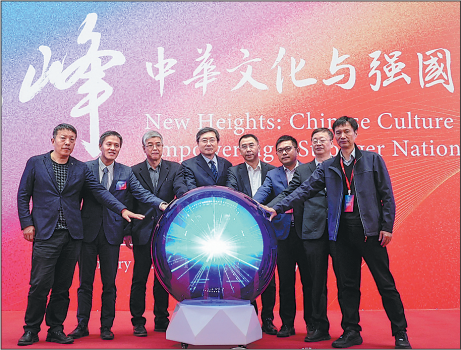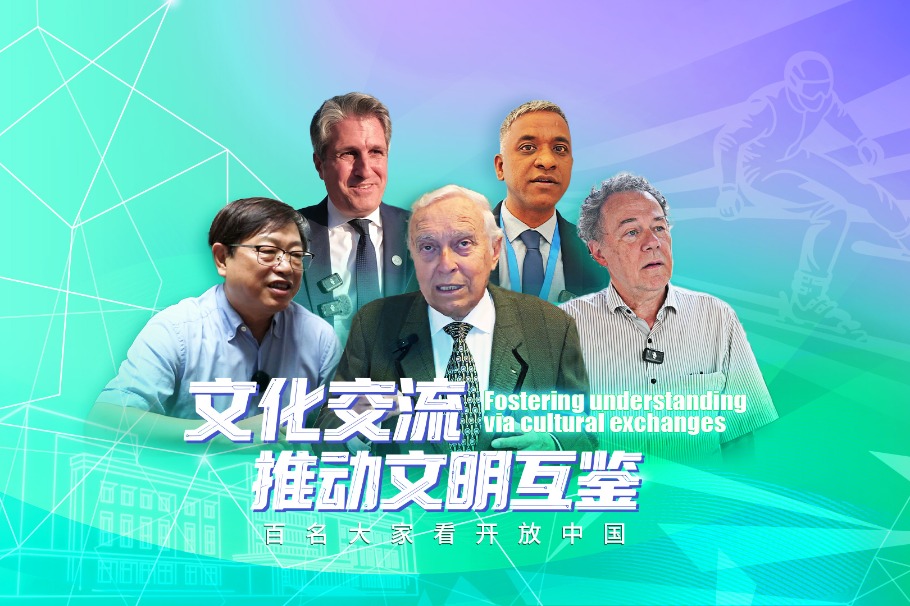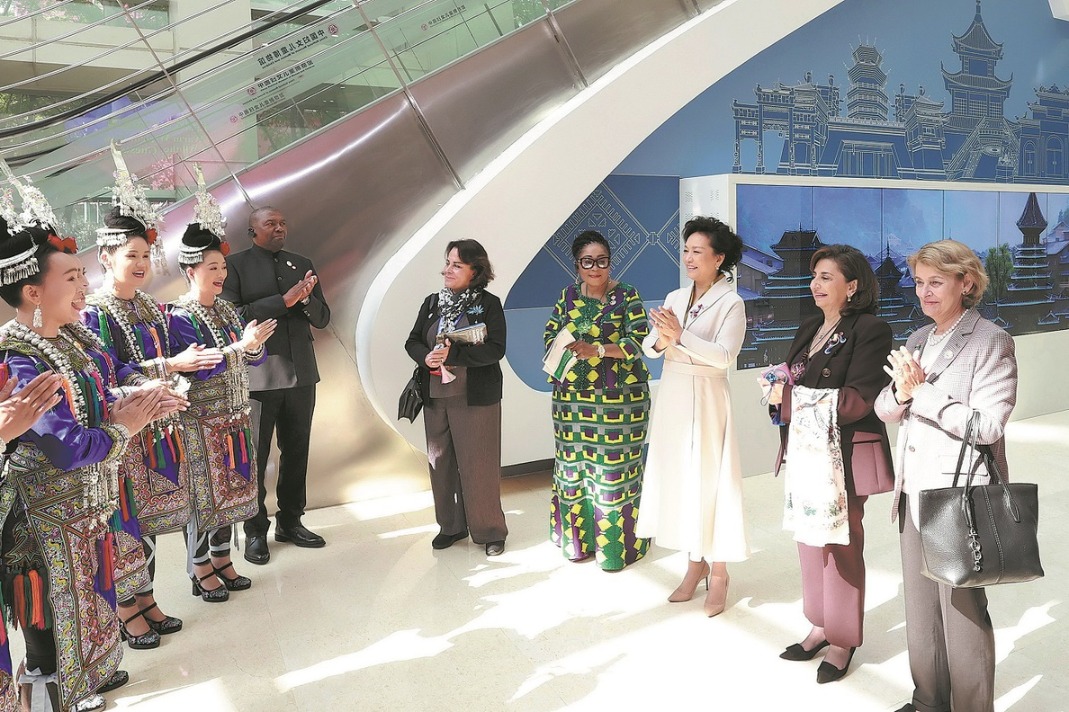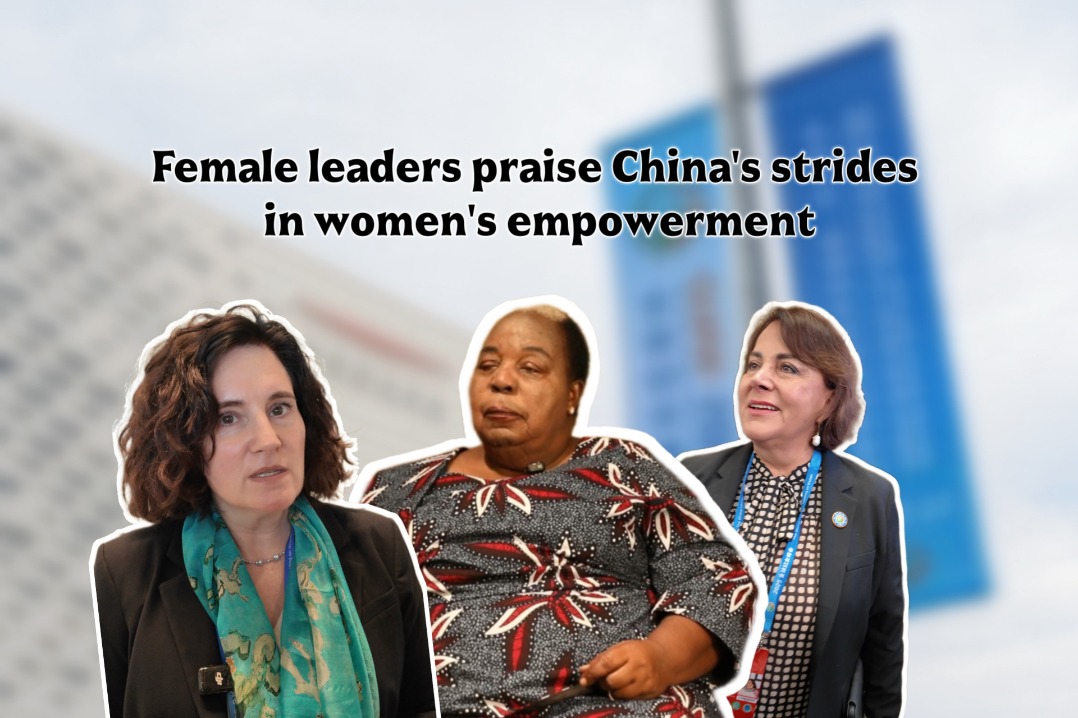Culture on the agenda
Forum in Beijing discusses importance of sectors to domestic economy and their wider ramifications, Yang Feiyue reports.

Government officials, scholars and experts exchanged notes on ways of stimulating cultural innovation and creative vitality at the Forum on International Cultural Industries in Beijing on Saturday.
This year is the final year of the 14th Five-Year Plan (2021-25) and a critical year for developing the 15th Five-Year Plan (2026-30), says Xiang Yong, head of Peking University's Institute for Cultural Industries, the forum's host.
"This forum aims to not only summarize the experiences and measures of the past year and assess the overall progress of the 14th Five-Year Plan, but also provide insight and forecasts for the upcoming cultural system reform and development of cultural heritage and the cultural industry," Xiang adds.
The forum focused on a wide range of topics, including cultural creativity empowerment by artificial intelligence, integration of culture and tourism with rural vitalization, and effective mechanisms for the integration of culture and technology.
Zhang Xu, president of the World Tourism Alliance, says that the government has introduced a series of policies to deepen cultural system reforms and promote the healthy development of the cultural sector.
"Among these, the integration of culture and tourism has seen significant achievements," Zhang says.
In the first three quarters of 2024, the number of domestic trips reached 4.2 billion, an increase of 563 million compared to the same period of the previous year, representing year-on-year growth of 15.3 percent. Spending by domestic tourists amounted to 4.35 trillion yuan ($593.3 billion), an increase of 665 billion yuan year-on-year.
The development of new formats featuring the integration of tourism with cultural heritage, museums, performing arts, and film and television has played a crucial role in stimulating domestic demand, promoting employment, activating the market, and boosting confidence, Zhang says.
In 2023, the added value of cultural and associated industries reached 5.94 trillion yuan, accounting for 4.59 percent of GDP, the National Bureau of Statistics of China reported. The added value of tourism and associated industries in China reached 5.48 trillion yuan the same year, accounting for 4.24 percent of GDP.
"We expect that by 2024, the combined contribution of these two industries to GDP will exceed 9 percent. The culture and tourism industries have increasingly played a vital role in stabilizing growth, expanding consumption, promoting employment and improving livelihoods," says Miao Muyang, director of the Industrial Development Department of the Ministry of Culture and Tourism.
According to Miao, the ministry will focus on promoting spending and increasing the supply of cultural and tourism products, and introduce a package of policies to promote the prosperity of cultural and tourism spending.
"By fully leveraging the advantages of China's massive market, we will track and analyze changes in social consumption psychology, align with the upgrading of consumption and growing individual demand," Miao says.
"We will organize a variety of promotional activities to optimize the consumption environment, enhance the consumer experience, and produce innovative scenarios. This will effectively drive secondary and derivative consumption, fueling its potential," he adds.
The ministry will continue to promote the integration of culture and tourism with sectors like agriculture, commerce, sports, film and television, low-altitude aviation, aerospace, and traditional Chinese medicine. More effort will go into expanding urban, rural, online, nighttime, and international consumption spaces to allow the culture and tourism industries to contribute to rural vitalization and urban renewal.
Miao says the ministry will also enhance the industrial chain and drive transformation through technological innovation.
"We will actively explore effective mechanisms for the integration of culture and technology, promote the digital transformation of traditional cultural industries, and increase the supply of high-quality products," Miao says.
Fu Caiwu, head of the National Institute of Cultural Development, Wuhan University, based in Hubei province, emphasizes the importance of identifying and presenting the culture of the Yangtze River.
"The reason why China has been able to reach where it is today, presenting its current form, lies in the foundational presence of the Yangtze River and Yellow River civilizations. The existence of these two civilizations has made China distinctive, and has laid the foundation for our cultural strength as a nation," Fu says.
He says that the Yangtze River is not merely a geographical space but also a historical and cultural one.
"Through this river, we have constructed the collective memory of China. This memory has been passed down through four key channels across generations: history, literature, art and religion," Fu explains.
The rice farming that originated in the Yangtze River basin made a huge contribution to the world, serving as one of the most important resources for the development of society in Asia, while the success of water management in the Yangtze River region contributed to the development of the early social structures and functions, he adds.
The water-centered social structure and ethos formed around water management, such as the philosophy of shangshan ruoshui ("the highest good is like water"), are symbols of the culture of Jiangnan (the region south of the lower reaches of the Yangtze River), and constitute its essence, Fu says.
Huang Changyong, president of the Shanghai Theatre Academy, calls attention to rural culture and civilization in China's modernization process and urges understanding of rural changes from the perspectives of environment, culture, and structure.
"I believe there are some fundamental differences between the modernization processes of China and the West. From a certain perspective, China is more deeply rooted in an agrarian social foundation or a civilization centered around mountains and rivers," Huang says.
Huang adds that many outstanding works of literature are set in villages.
"Therefore, I believe that while focusing on the development of urban cultural industries, we must also place great emphasis on the countryside, as cultural development in rural areas is even more crucial," Huang says.
Li Xiangmin, a senior official from the Nanjing University of the Arts based in Jiangsu province, believes the process of Chinese modernization has global significance.
In its pursuit of modernization, China should emphasize its cultural foundations and establish a development path with distinctive Chinese characteristics, he says.
China's traditional culture, guided by core principles such as benevolence, prioritizing the needs of the people, upholding integrity, advocating justice, valuing harmony, and pursuing universal unity, facilitates the coordinated development of spiritual and material civilizations, while the humanistic economic philosophy of Chinese-style modernization provides new perspectives and solutions to global challenges, reflecting its essential value in addressing universal human issues, Li adds.



Today's Top News
- Manila's delusion of external support
- Major Myanmar fraud cases enter prosecution
- Xi congratulates Patrick Herminie on election as Seychelles' president
- Xi's article on promoting implementation of global initiatives to be published
- China prosecutes major northern Myanmar criminal gangs
- US tariffs a threat to African economies






























